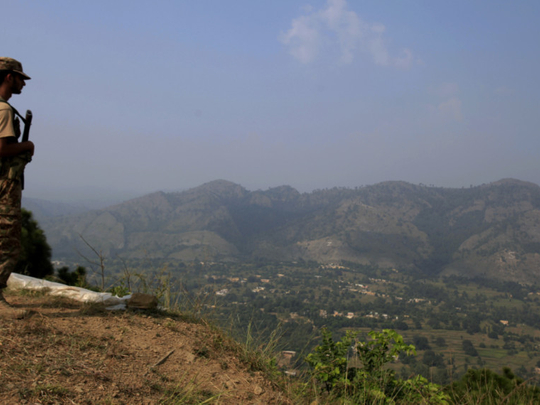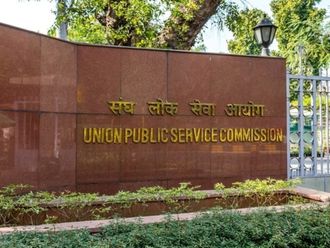
The subcontinent is on the boil. India and Pakistan have exchanged heavy fire along the line of control (LoC) over the last few weeks. With a history of hostilities, both countries find themselves locked in a fresh cycle of violence as civilian and military casualties on both sides of the border rise. A ceasefire agreement, which had been largely holding up for more than 12 years, has been breached multiple times during recent months. This has raised fears of another wider conflict consuming the neighbouring countries. While the long-standing discord between India and Pakistan is largely due to their varying stances vis-à-vis the state of Jammu and Kashmir, the immediate raison d’etre of the current situation has been a series of tit-for-tat attacks, following the attack on an Indian Army base in Uri on September 18. The “surgical strike” by India that followed on several alleged militant launchpads inside Pakistan-administered Kashmir (denied by Pakistan) has seen a determined pushback from Pakistan.
With the spiral of violence along the LoC turning ugly, as many as 12 people, including three Pakistani soldiers, were killed in alleged Indian cross-border firings last week. This followed the killing of three Indian soldiers, with the body of one of them mutilated in a cross-LoC attack. While Pakistan has denied the allegations as “baseless”, its troops have maintained a high level of vigil along the border that separates the two nuclear-armed nations. The ongoing exchange of cross-border firing is the most intense and widespread since India and Pakistan agreed to a ceasefire along the 198-km international border, the 778-km LoC and the 110-km Actual Ground Position Line in 2003.
The Pakistan Director General of Military Operations has already spoken with his Indian counterpart over the hotline for “unscheduled talks”. On its side, India has maintained direct military pressure on Pakistan through deployment of advanced weapons systems and troop positioning. The Indian Army is making use of heavy-calibre weapons in sensitive border sectors like Macchil, Keran, Noushera, Bhimber Ghali and Krishna Ghati. This has prompted Pakistan Prime Minister Nawaz Sharif to hold a high-level security meeting to review the situation. India is also closely watching the developments and keeping an eye on any action that Pakistan might take.
As events unfold in a precarious fashion along the LoC, the United Nations has expressed its deep concern. UN Secretary-General Ban Ki-moon has called for restoration of stability in the region, saying the world body supports “all efforts” to reach “durable” peace and security. “The secretary-general is deeply concerned about the deterioration of the situation along the Line of Control in Kashmir in recent days. He calls on all involved to prioritise the restoration of calm and stability in order to prevent any further escalation and loss of life,” a UN statement said, adding that Ban “trusts India and Pakistan can find common ground and work towards a sustainable peace”. British Foreign Secretary Boris Johnson has also expressed concern over the escalation and appealed to both countries “to maintain a positive dialogue” to resolve the Kashmir dispute. The escalation may prove an unexpected early test for President-elect Donald Trump and his emerging foreign policy team. Trump in a recent interview has called Kashmir a “very, very hot tinderbox.”
Lowering the hostility
As the largest economy in the South Asian region, India can ill-afford to be held hostage by intermittent hostility with Pakistan, an emerging economy. Much of the acrimony between the two nations has been over the state of Jammu and Kashmir. In recent months the valley has relapsed into a cycle of unrest, partly brought about by militarisation of the civilian spaces. The latest round of violence – which has now become an India-Pakistan stand-off – was triggered by the killing of popular rebel commander Burhan Wani, who had been successful in using social media to channel his dissent. During this summer, irate protesters defied curfew orders in Indian-administered Kashmir while mobile phones, internet and television services were sporadically cut off.
This was followed by a combative Pakistan taking up Kashmir in a major way at the 71st UN General Assembly session in September. Around half of Prime Minister Nawaz Sharif’s 20-minute speech to the world body was devoted to India — especially the situation in Jammu and Kashmir. In its reply India noted that Islamabad must “abandon this dream” about using terror attacks to “obtain territory it covets.”
Over the subsequent few weeks and months, the war of words escalated into violence in Kashmir and increased tensions on the Indo-Pak border. As the situation turns increasingly volatile, it is incumbent upon all parties to de-escalate and allow space for dialogue and diplomacy. Both countries must stand down from the current showdown. India and Pakistan, with their huge populations, have myriad problems. With both sides avowed to shape the destinies of their people and go forward, peace is an absolute requisite. For their grand economic plans to work, both countries must guard against adventurism, which poses the risk of escalating into war. The people of the subcontinent deserve the endowment of peace from their governments.








